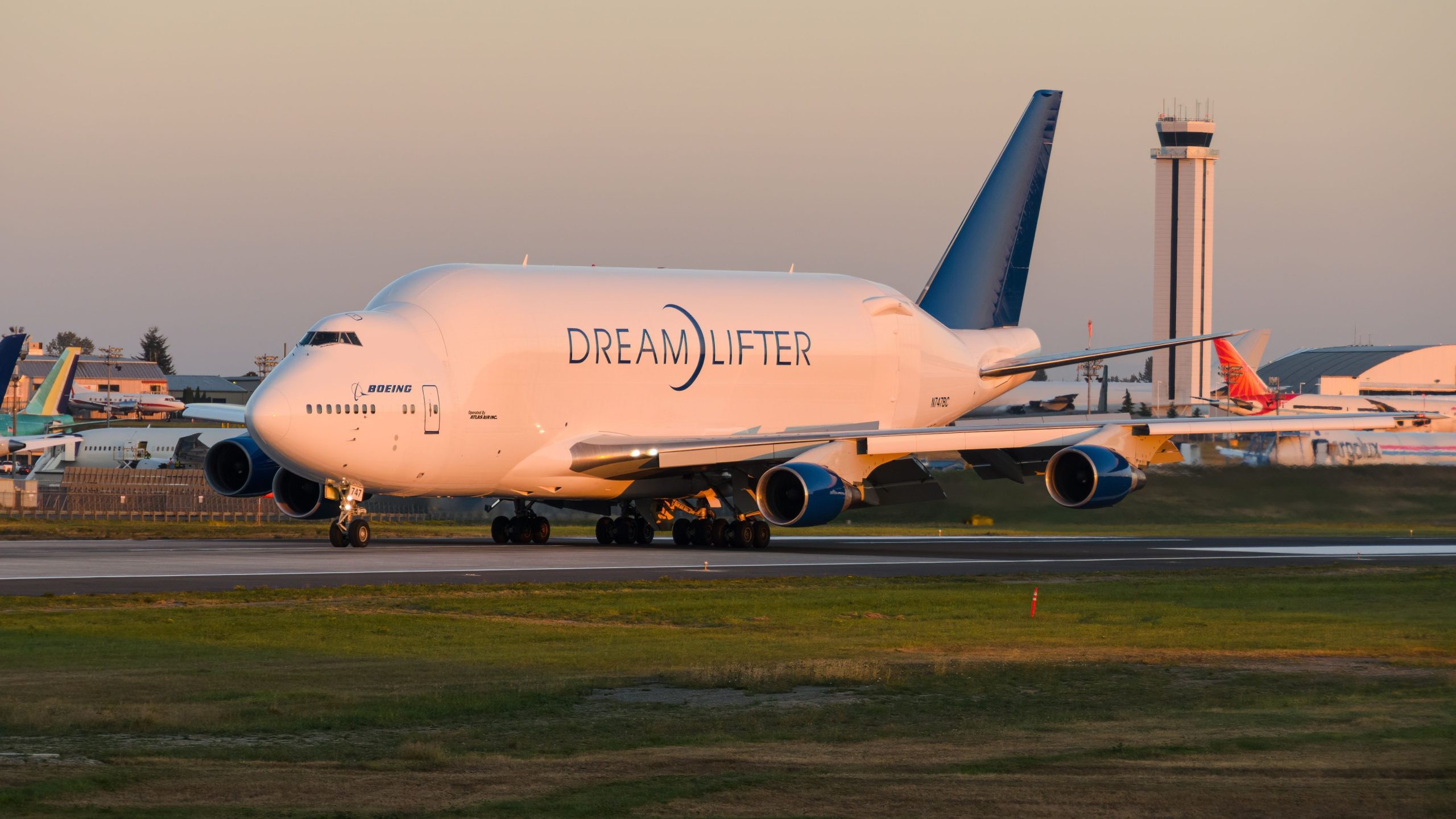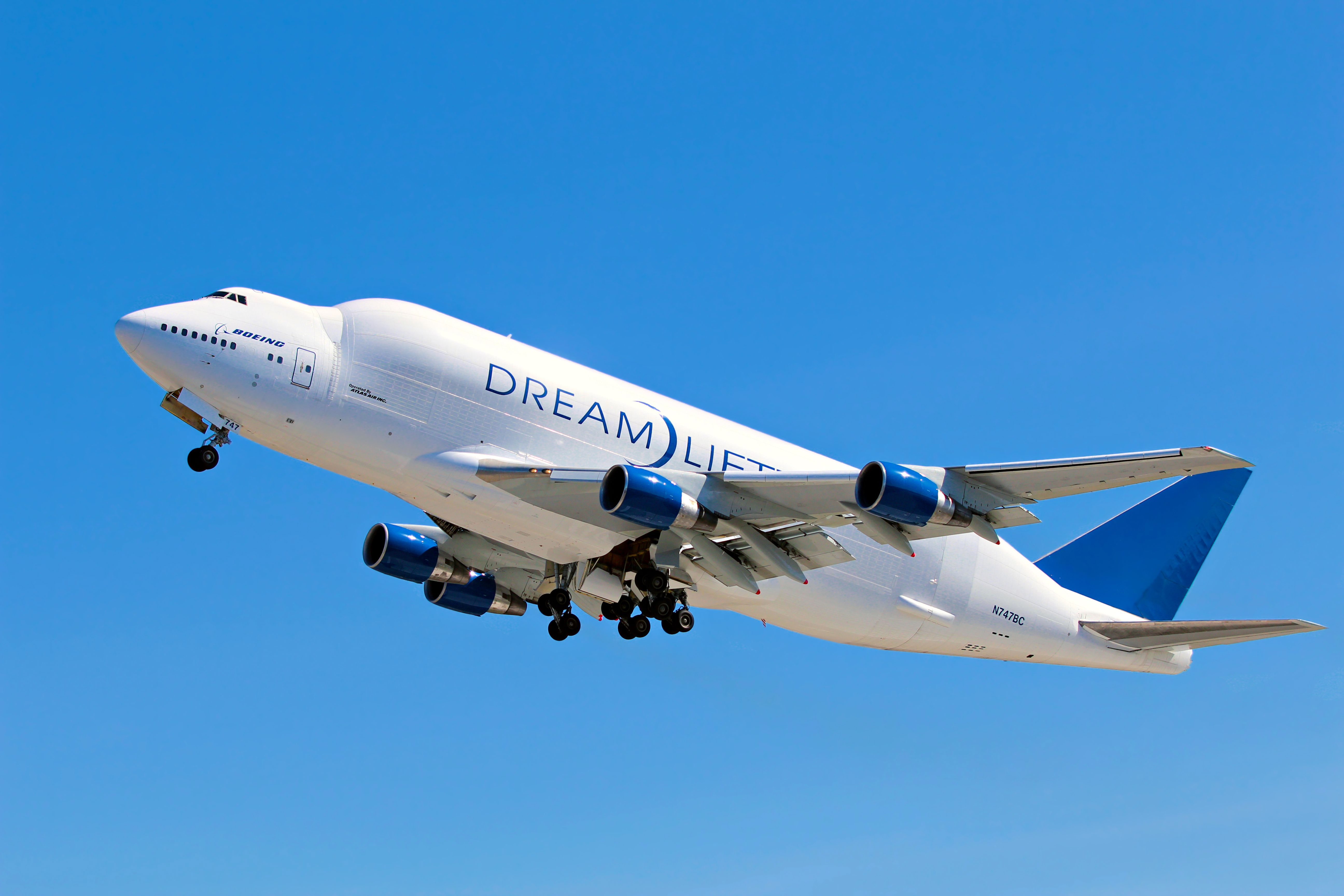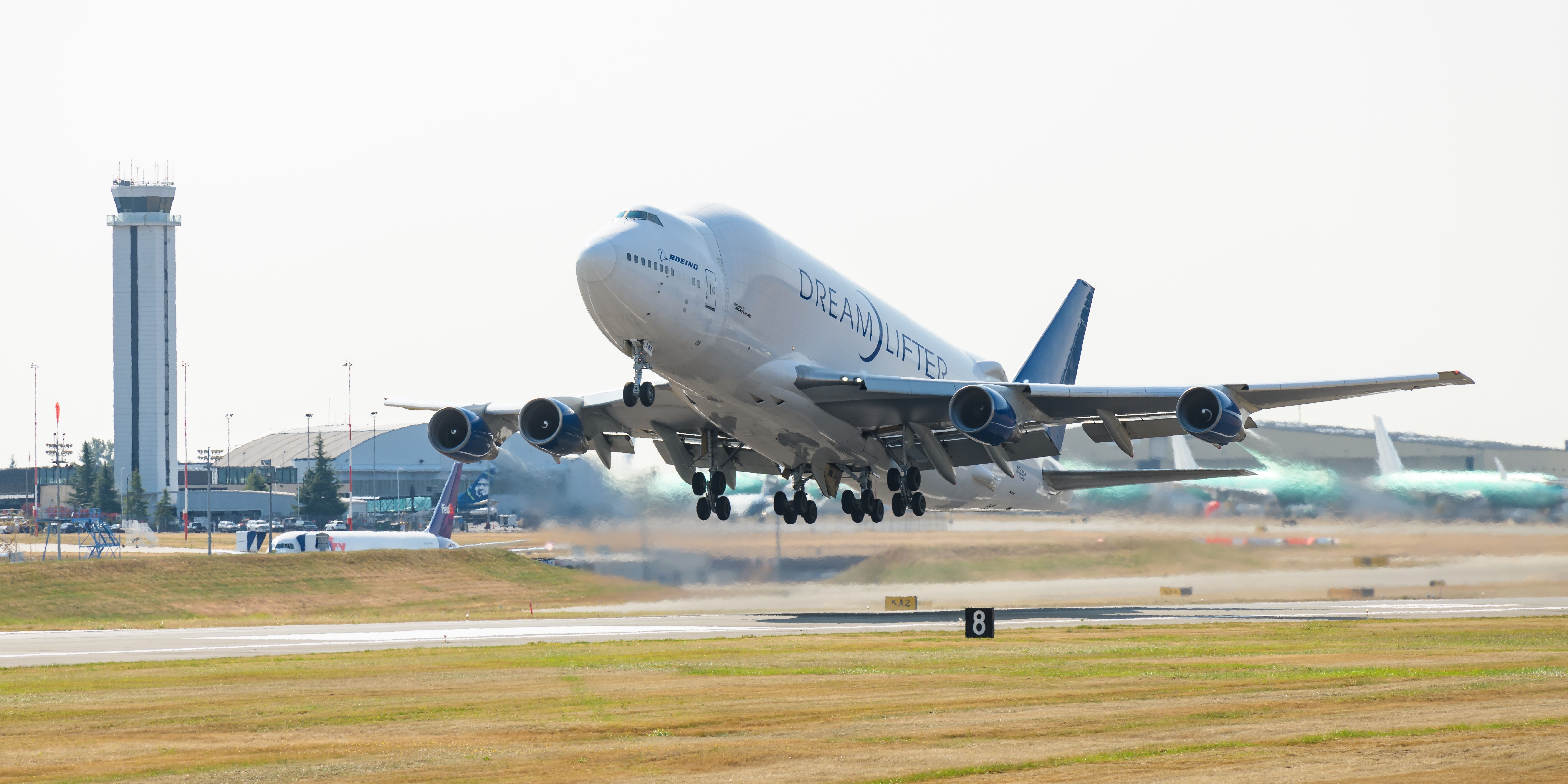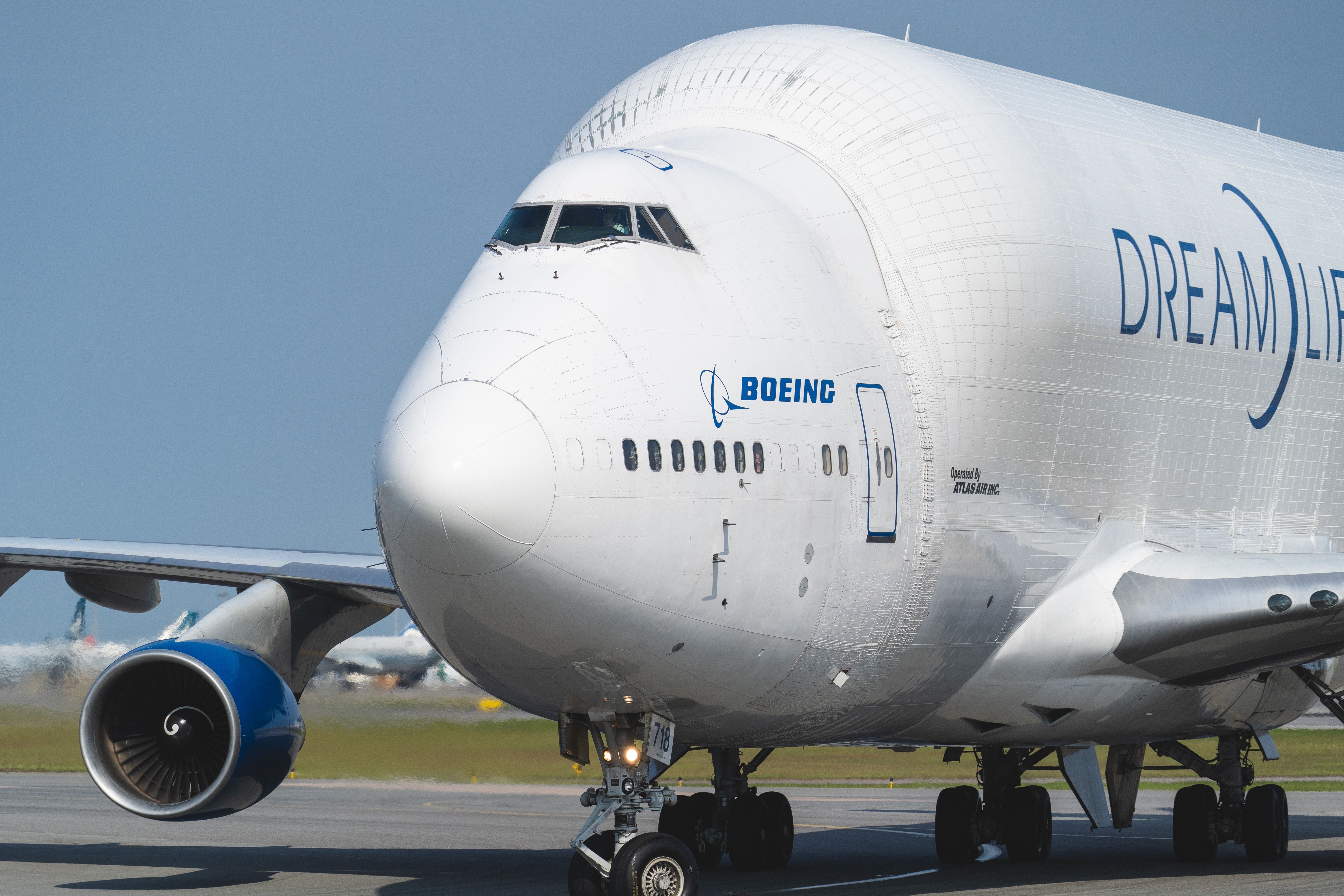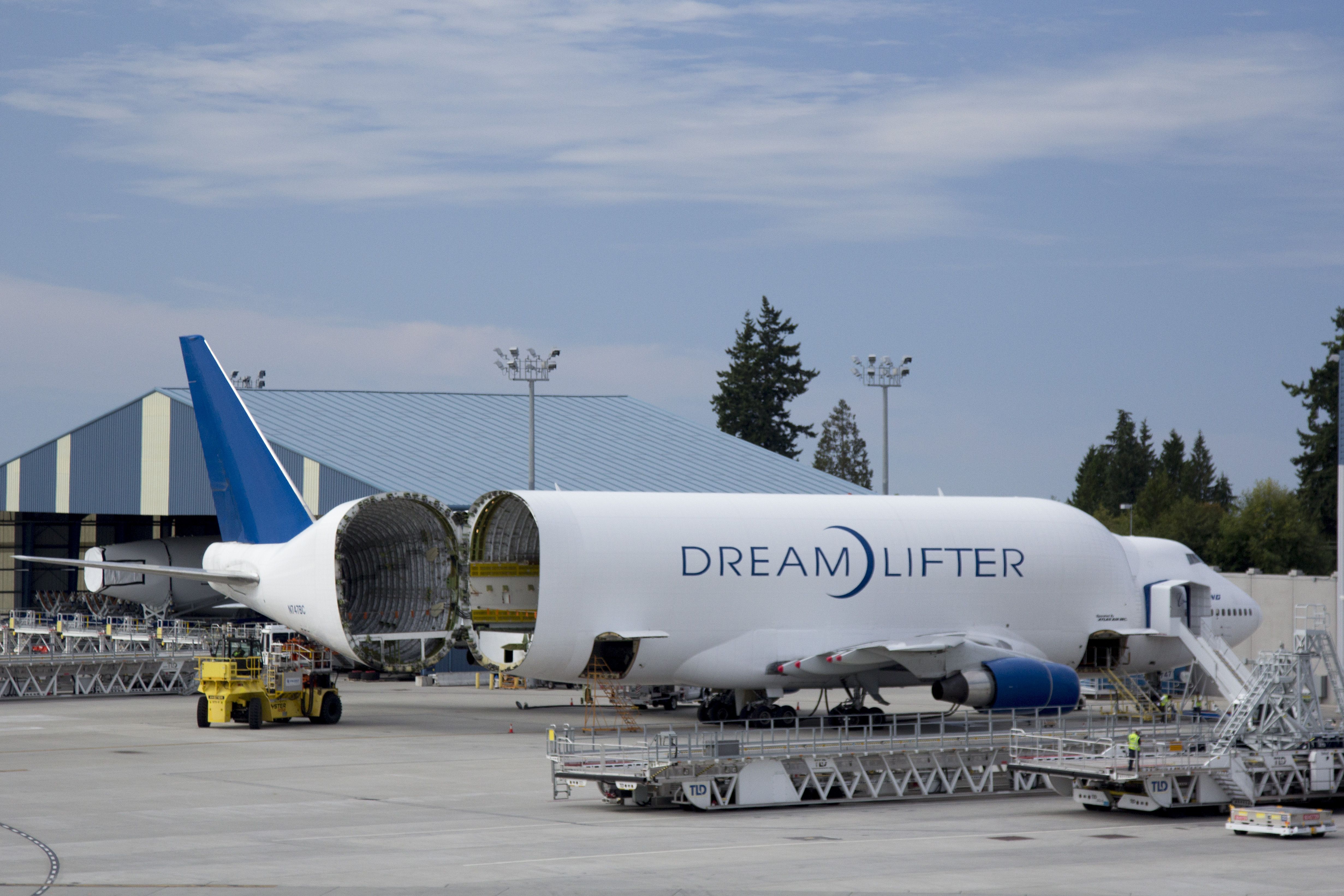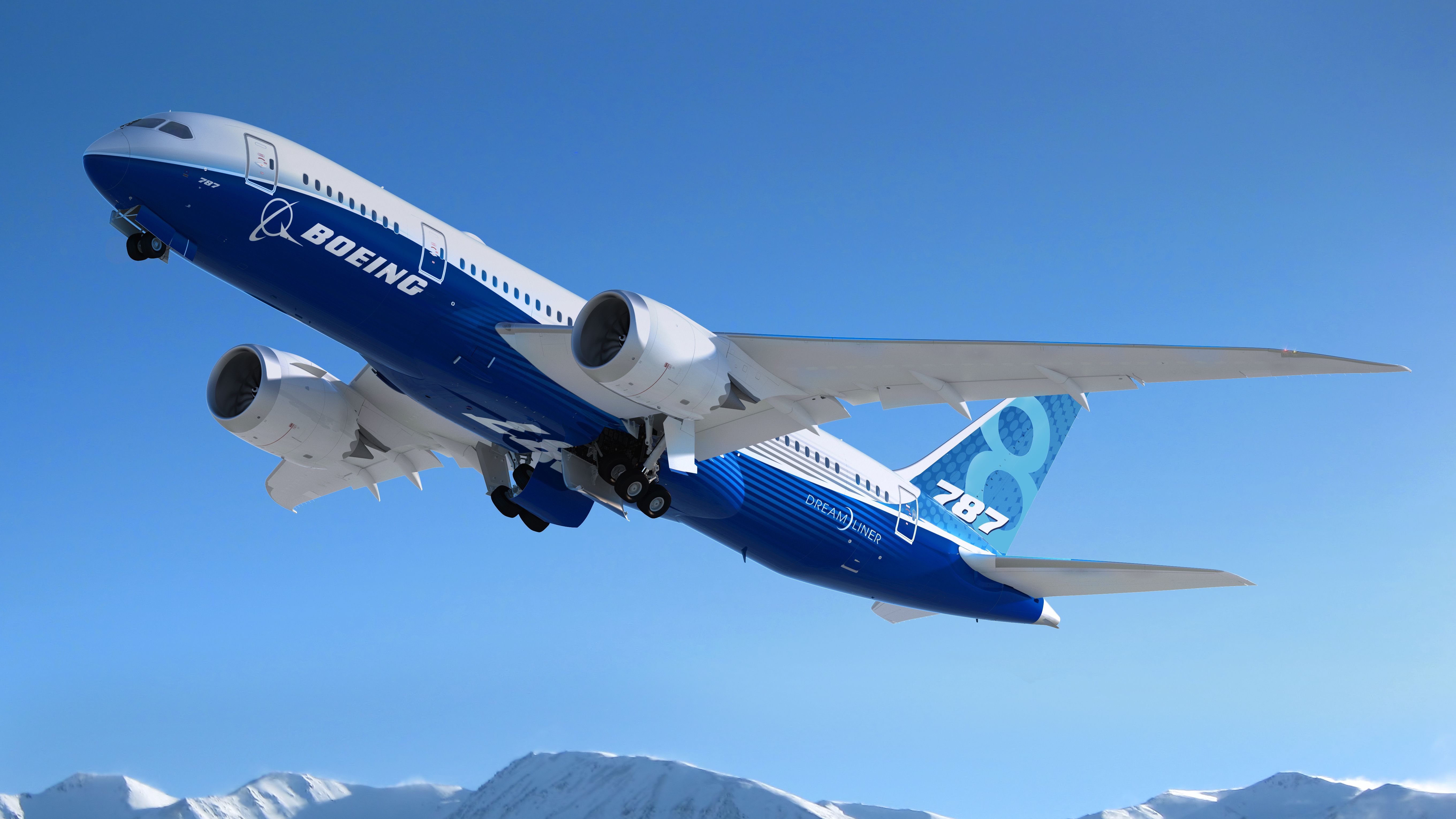The unmistakable shape and style of the Boeing Dreamlifter quickly catches the attention of even the most inattentive observers. This colossal aircraft is an enlarged and elongated version of the Boeing 747-400. It was designed to carry parts of Boeing’s 787 Dreamliner (hence, the name) from various worldwide suppliers to Boeing’s factories across the United States to avoid transport by sea, which would have taken too much time and money.
It falls behind the Airbus Beluga XL in fuselage volume and the 747-8 in length, but since it entered service in 2007, the Dreamlifter continues to be admired. This article will explore five fun facts about the Boeing Dreamlifter that showcase its impressive capabilities and unique features.
1 Only four Dreamlifter aircraft have been built
In the early 2000s, Boeing thought to make an aircraft based on the most oversized cargo plane it had available up to that time, namely the 747 “Freighter,” which did not have enough volume inside to carry sections of the 787. Then, it was decided to start from the 747-400, removing the entire upper deck, enlarging its fuselage to increase the interior volume, and thus creating a new aircraft called the Large Cargo Freighter (LCF).
Photo: cpaulfell | Shutterstock
The Dreamlifter project was, from the beginning, different from the usual ones as it was dedicated to a limited number of aircraft rather than mass production and large-scale sales. After various tests, the first flight was made on September 9, 2006, and on June 2, 2007, the Dreamlifter received flight certification to begin cargo service.
Initially, just three aircraft were converted to Dreamlifters, starting with one 747-400 from Air China and two from China Airlines. Later, in 2010, a fourth from Malaysia Airlines joined the fleet.
2 Missions during the COVID-19 pandemic
In the early months of 2020, during the COVID-19 pandemic, former US President Donald Trump decided to use three 747-400LCF Dreamlifters to help distribute supplies and materials in the fight against the virus, making a positive impact during the pandemic.
During this period of worldwide blockades and restrictions, the cargo aircraft temporarily shied away from its mission of transporting parts between global production facilities as part of the 787 Dreamliner program.
Photo: Ian Dewar Photography | Shutterstock
The Dreamlifter flew its first aid mission from Hong Kong to South Carolina via Anchorage, carrying 1.5 million medical masks onboard and over 150,000 protective goggles and face shields from China to the United States.
3 Pivotal role in the production of the Boeing 787 Dreamliner
The 787 was, and still is, an international program. Sections of the 787 came from factories located in Grottaglie, Italy; Charleston, South Carolina; Wichita, Kansas; and Nagoya, Japan.
Transporting these components to Boeing’s final assembly plants in Everett, Washington, required up to a month of sea shipping. With the introduction of the Dreamlifter, this time has been reduced to only nine hours. By introducing this particular aircraft, Boeing has saved between 20% and 40% in costs for the total Dreamlifter project cost of nearly $1 billion.
Photo: Terry K | Shutterstock
However, in recent years, partly due to the pandemic that has affected aircraft production, the 787 family has suffered delays and reductions in production. At times, aircraft deliveries were halted altogether, causing Dreamlifters to be used less than during the pre-COVID period.
4 Once, a Dreamlifter landed at the wrong airport
In November 2013, a 747 Dreamlifter operated by Atlas Air (a global cargo airline that operates all Dreamlifters) flew from JFK in New York to McConnell Air Force Base, located about four miles southeast of Wichita, Kansas.
According to Atlas Air’s subsequent investigation, there were intermittent problems with the first officer’s flight display aboard the aircraft. Believing that the onboard instrumentation was faulty, the pilots disconnected the autopilot to make an instrument approach toward the airport.
The plane did not land at McConnell Air Force Base but about eight nautical miles away at Colonel James Jabara Airport, a small General Aviation airfield in northeast Wichita with a runway 6,000 feet long, about half the length of McConnell’s 19L, which is over 12,000 feet.
The concrete runway of the small airport was not designed to support the weight of an aircraft as large as the Dreamlifter, and as a result, the airport was closed for several hours to check for damage. After a 13-hour layover at Jabara Airport and making many technical calculations (consider that the optimal runway length for a 747 to take off is 9,199 feet), the Dreamlifter could take off and complete its mission to its final destination.
The error was blamed on both pilots for not briefing the other airports in the area, the runway approach lighting system, and the air traffic control tower, which should have noticed the deviation and then alerted the pilots to the error.
5 The world’s largest cargo aircraft with a swing tail door
The Dreamlifter is not the world’s first aircraft with a swing tail door; think of the Douglas DC-6A. However, it is undoubtedly the world’s largest of its kind. This makes it easy to load and unload large parts, such as the fuselage or wings of the Boeing 787 Dreamliner.
Unlike conventional cargo planes with a tail door, the tail of the Dreamlifter can be opened sideways. This innovative characteristic allows for more accessible loading and unloading of oversized cargo, especially when the aircraft is parked in tight spaces or near other facilities. The Dreamlifter has a volume of 65,000 cubic feet and can hold three times that of a 747-400F freighter.
Photo: Alex JW Robinson | Shutterstock
The Dreamlifter’s colossal cargo hold allows it to carry components of the 787 Dreamliner and other oversized cargo, such as satellites and large industrial equipment. This versatility makes it a valuable asset for aerospace and other industries that require the transport of large and heavy objects. Boeing has yet to announce any plans to retire the Dreamlifter, which will likely continue to fly for a number of years.
Do you think the Dreamlifter will be retired soon or not? Let us know in the comments below.
Sources: Business Insider, CNBC

